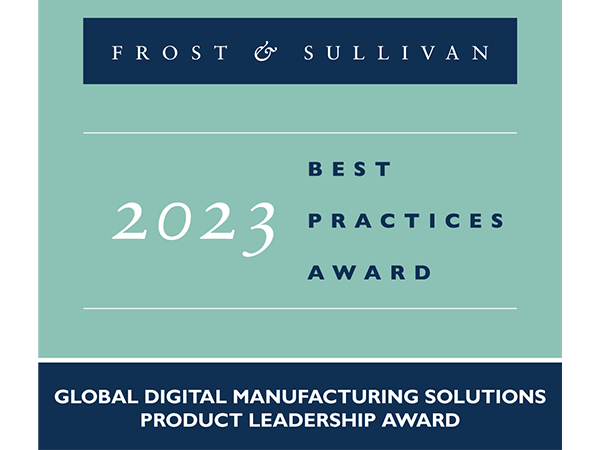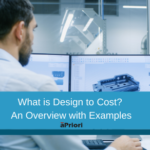
Key Takeaways:
- Transparency is central to improving profitability and supplier relationships
- Apply our three practical tips to improve supply chain collaboration
Full Article:
Your relationship with your key manufacturing suppliers is critical to the success of your business. Especially if that supplier relationship spans years and multiple successful new product launches. And that’s why many manufacturers are reluctant to push back on cost increases with their tier-one suppliers.
But, by having a deeper understanding of raw material and production costs, sourcing teams can pinpoint cost outliers and use data to reduce product costs. Importantly, you can achieve cost savings while maintaining strong relationships with your strategic suppliers.
Can this product cost estimate really be 5x lower than the price I’m paying? In some cases, the answer is yes. That said, you shouldn’t necessarily run to your supplier with an estimate in hand and demand a lower price because there are several factors that contribute to product cost.
This article outlines the evolution of supplier collaboration, how to use cost benchmarking data during supplier negotiations, and three productive ways to partner with suppliers to address cost. And as a bonus, we’ve included supplier negotiation tips that apply to new suppliers and trusted supply chain partners.
Procurement’s Traditional Approach Cost Reduction
For years, original equipment manufacturers (OEMs) typically asked their suppliers for a defined annual price reduction. For example, procurement may request a 5% reduction in price on everything they purchase from the supplier. The next year, they may request a 6% reduction. And so on.
This type of cost reduction benefits the OEM and its supplier. The business benefits from an annual reduction in cost while ensuring they are working with a supplier that fully understands their product’s specific design and build.
The supplier, in turn, benefits by working with a business and a product that they truly understand, which can reduce training, floor setup, and other overhead costs. Plus, the supplier has the added benefit of securing the business for another year.
But, the unfortunate reality is that this type of annual discount supplier relationship can become adversarial over time. To remain profitable, your supplier may overcharge you for some parts, knowing that eventually, they may lose money on the parts they sell you because they have run out of margin.
A Win-Win Approach to Strategic Sourcing
Today, sourcing teams have a lot more power when it comes to negotiating the specific cost of a product by using fact-based negotiation insights derived from digital manufacturing simulation software. The right manufacturing simulation software can save you hundreds of thousands of dollars – and in some cases millions of dollars – during the course of your supplier relationship.
What is Digital Manufacturing Simulation Software?
Product costing software, such as aP Pro, estimates and captures the cost of new products early in the design phase. It leverages manufacturing cost models and regional data libraries to run accurate cost simulations in real-time. Paired together, the data creates “digital factories” to help cost teams identify and reduce cost impacts in designs.
At its core, the software gives companies insight to optimize new product costs to maximize margins. The advanced software ensures that companies achieve their product cost optimization goals. And importantly, its automation capabilities help to address risk management by eliminating manual mistakes associated with using data across multiple systems.
Digital manufacturing simulation software provides teams across the product development lifecycle with insights to conduct a fact-based negotiation with suppliers. This helps to ensure that you purchase each part at a fair price, that you’re not overspending, and that your suppliers are not losing money.
Benefits of a Fact-Based Procurement Strategy
Fact-based negotiation is a highly effective cost-reduction strategy. During fact-based negotiations, the detailed component cost information within your digital manufacturing simulation software enables you to have focused discussions with your supplier about parts that you may be overpaying for. Digital manufacturing simulation also enables sourcing and procurement teams to identify the biggest gaps between your cost estimate and your supplier’s quote.
This cost reduction strategy is much more effective than saying, “I want a 5% reduction in price every year.” Why? Because in cases where you’re paying 5x more than you should be for a specific part, a flat 5% discount may not save you as much as you could be saving. And in cases where you are already getting a fair price, you are not asking your supplier to take a loss.
Use Manufacturing Insights to Identify Cost Reduction Strategies
Like in any negotiation, the more information you have, the better. Simply phoning your supplier and saying, “I think I should be paying less for this part,” puts the negotiation power on the desk of your supplier. They now control the conversation surrounding the costs that contribute to your quote.
That’s why utilizing manufacturing simulation software is a critical first step to having a fact-based negotiation with your supplier.
With existing parts, manufacturing simulation helps you to identify potential savings opportunities by facilitating a spend analysis. Conducting a spend analysis leverages your detailed cost data to begin a collaboration with your supplier.
3 Tips for Cost-Saving Collaboration
Here are three key ways to collaborate with your supplier to reduce costs.
1: Identify Where You May Be Overpaying for Parts
Manufacturing cost estimation software makes it easy to identify parts for which you may be overpaying. Not only will aPriori help you identify your products should cost, but the cost breakdown also includes a detailed secondary cost analysis as well.
For example, let’s say you have two sheet metal parts. With aPriori, you can identify cycle times for each part. For one Part A, you see that you’re paying $1 a second for manufacturing time. For sheet metal Part B, you pay $3 per second for manufacturing time.
Negotiation Tip: With your manufacturing simulation estimate in hand, ask your supplier: Can you help me understand why Part A is $1 a minute and Part B is $3 a minute?
Now, there may be a good reason for this discrepancy. Perhaps Part B costs $3 a second because that particular part has more tolerances, which can slow down the manufacturing process. But you won’t know for sure until you approach your supplier.

2: Identify How Redesign can Reduce Product Costs
You may not need a simulation software solution to redesign a part to reduce costs. Simply asking your supplier for advice on what design changes they would recommend is a great way to reduce costs and quoting time. But, a supplier suggestion is no substitute for an optimized design.
An advanced manufacturing simulation solution gives you real-time design suggestions to ensure you’re designing to cost the first time. This is a great way to build a stronger relationship with your supplier.
Why? If you’re not using manufacturing costing software, sourcing will likely need to request several quotes from your supplier during the design process. And sometimes, it can take weeks for that quote to get back to you and your engineering team. In a situation where you need to redesign your part to cost 3-4 times, production times are pushed back by months because of the quoting process. And your engineers may feel frustrated by delays and multiple iterations of the same part.
Quoting this many times can be frustrating for your supplier, too. Providing multiple quotes for a single part increases the cost of doing business with you. And because they aren’t guaranteed your business in many cases, they spend valuable hours quoting your part repeatedly.
Instead, using cost modeling software helps you design to cost in the first iteration. Sending your supplier a single, optimized design requires only one quote from them. This is a significant incentive for your suppliers. Not to mention, you’ll have a strong understanding of what that product should cost.
Negotiation Tip: With your cost-optimized design in hand, say to your supplier: Can you provide us with a quote for this part? My manufacturing simulation software says this part will cost X dollars. Do you think we can get close to this estimate?
3: Improve the Production Process to Increase Efficiency
You may already know that matching parts to the supplier’s capabilities is one of the biggest opportunities to cost savings while maintaining a strong relationship with your supplier.
For example, a premier manufacturing simulation software solution can identify when a part is better suited for a Turret/Bend process than for a Laser/Bend process. With this information, you can eliminate suppliers from your RFQ list that do not have a turret.
For suppliers that have both laser and turret, oftentimes, the turret capacity is maxed out, so they may quote you for lasering, which is more expensive. This gives you the insight to select the right supplier or push for use of the turret instead of the laser.
Negotiation Tip: Can you help me understand why we’re being quoted for a laser/bend process when this part is suited for turret/bend?
Advantages of Fact-based Collaboration Across Your Supply Chain
Supplier negotiation is an integral part of your cost-saving strategy. And while a manufacturing simulation tool can give you the insights you need to frame a strong negotiation in your favor, it’s important to not foster an adversarial relationship with your supplier.
Instead of asking “why” questions like why am I overpaying, instead, frame it as a request for understanding. Start your collaboration with “Can you help me understand” instead.
Negotiation Tip: Ask, can you help me understand the difference between my estimate and your quote? This opens up a two-way dialogue instead of beginning with a one-way accusation. Sometimes, there are legitimate reasons for the cost difference. Sometimes, the supplier simply isn’t the right fit for your part. Opening a dialogue allows both you and your supplier to reach a common, profitable ground to move forward together.
Frost & Sullivan Names aPriori the Digital Manufacturing Solutions Leader
Get the full story.





